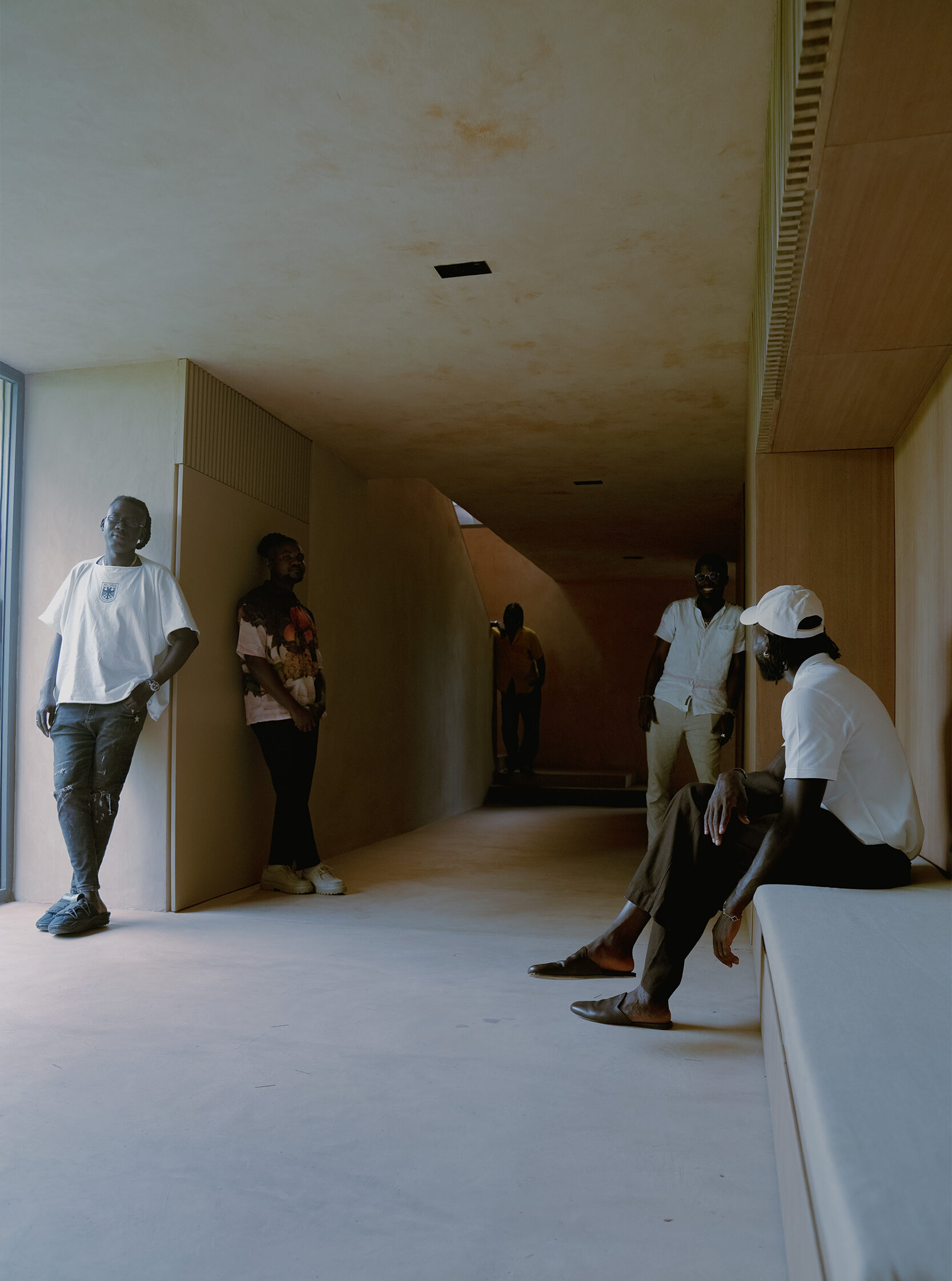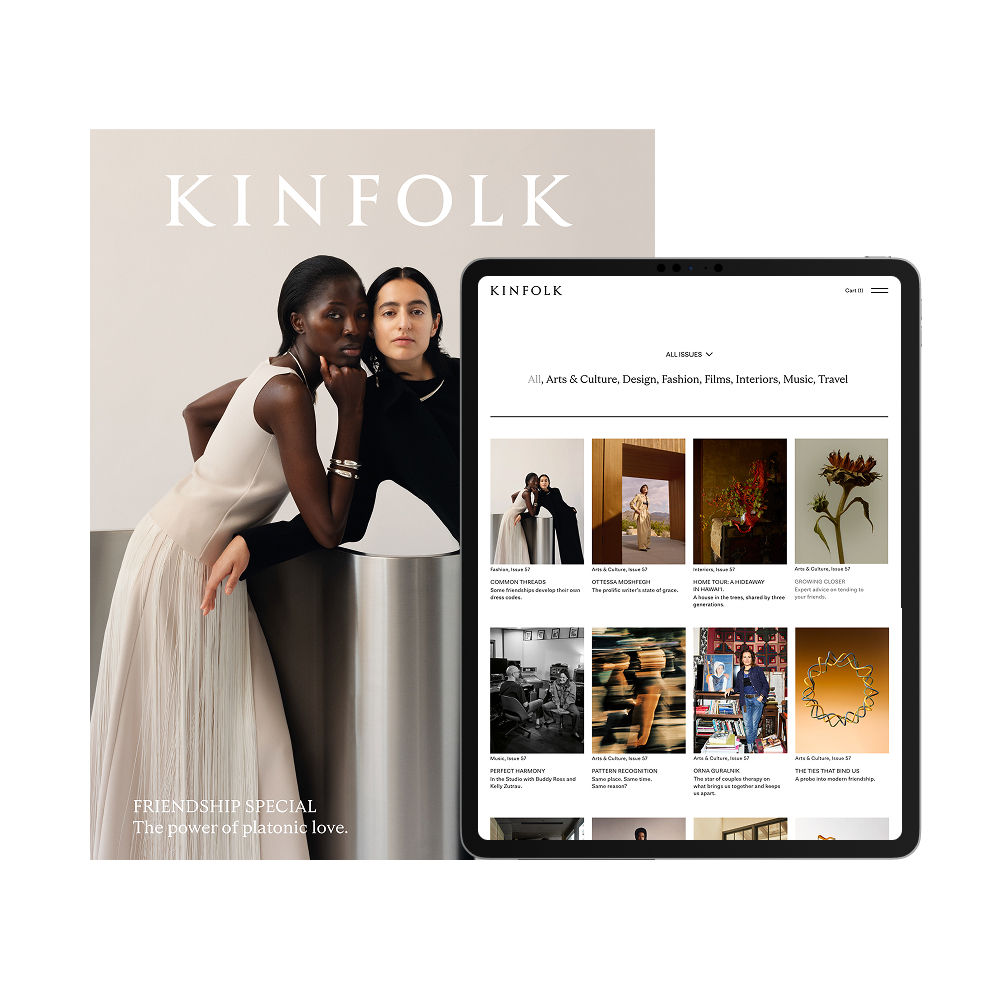Rossana Orlandi
Rossana Orlandi has seven decades of Saturdays under her belt. In Milan, we spend one more in her company.
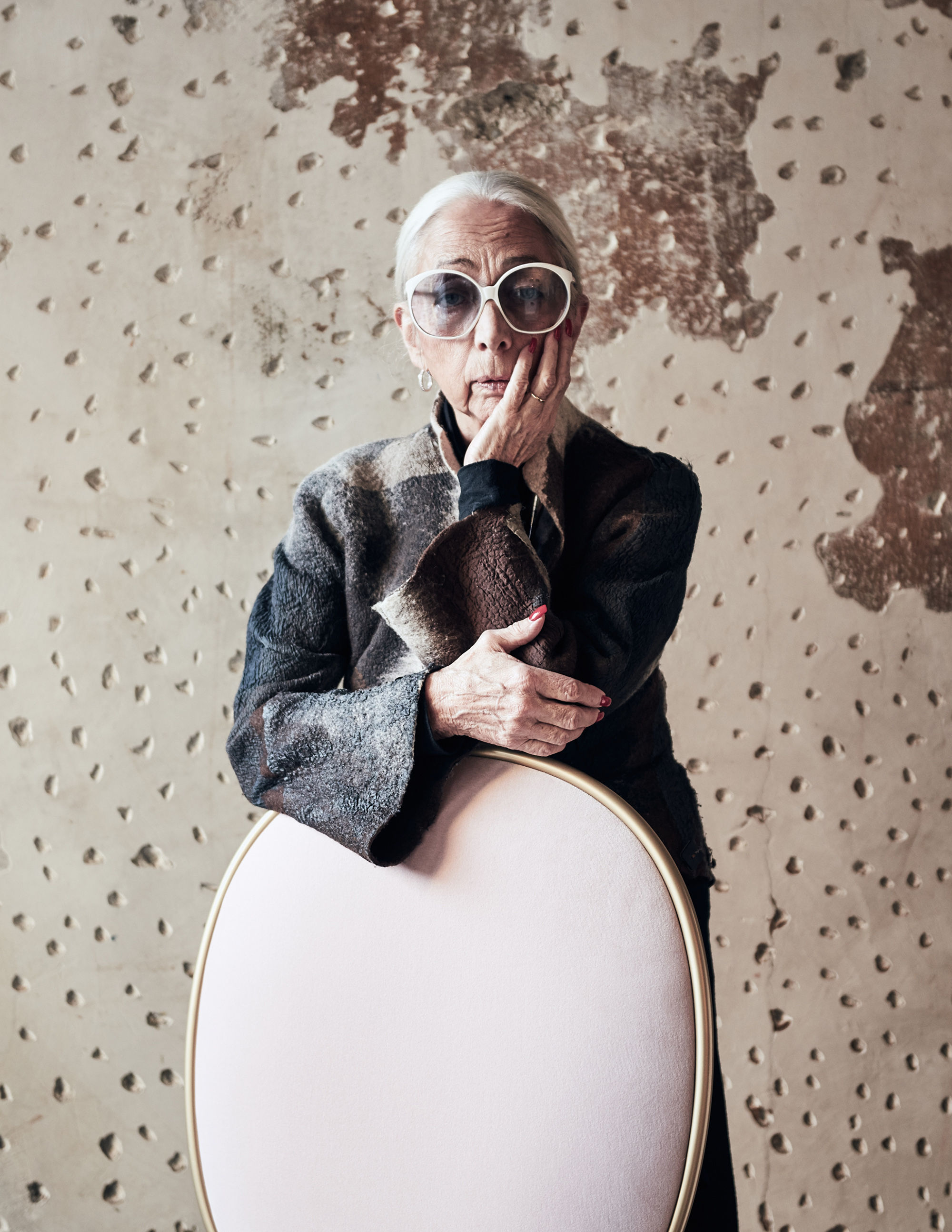
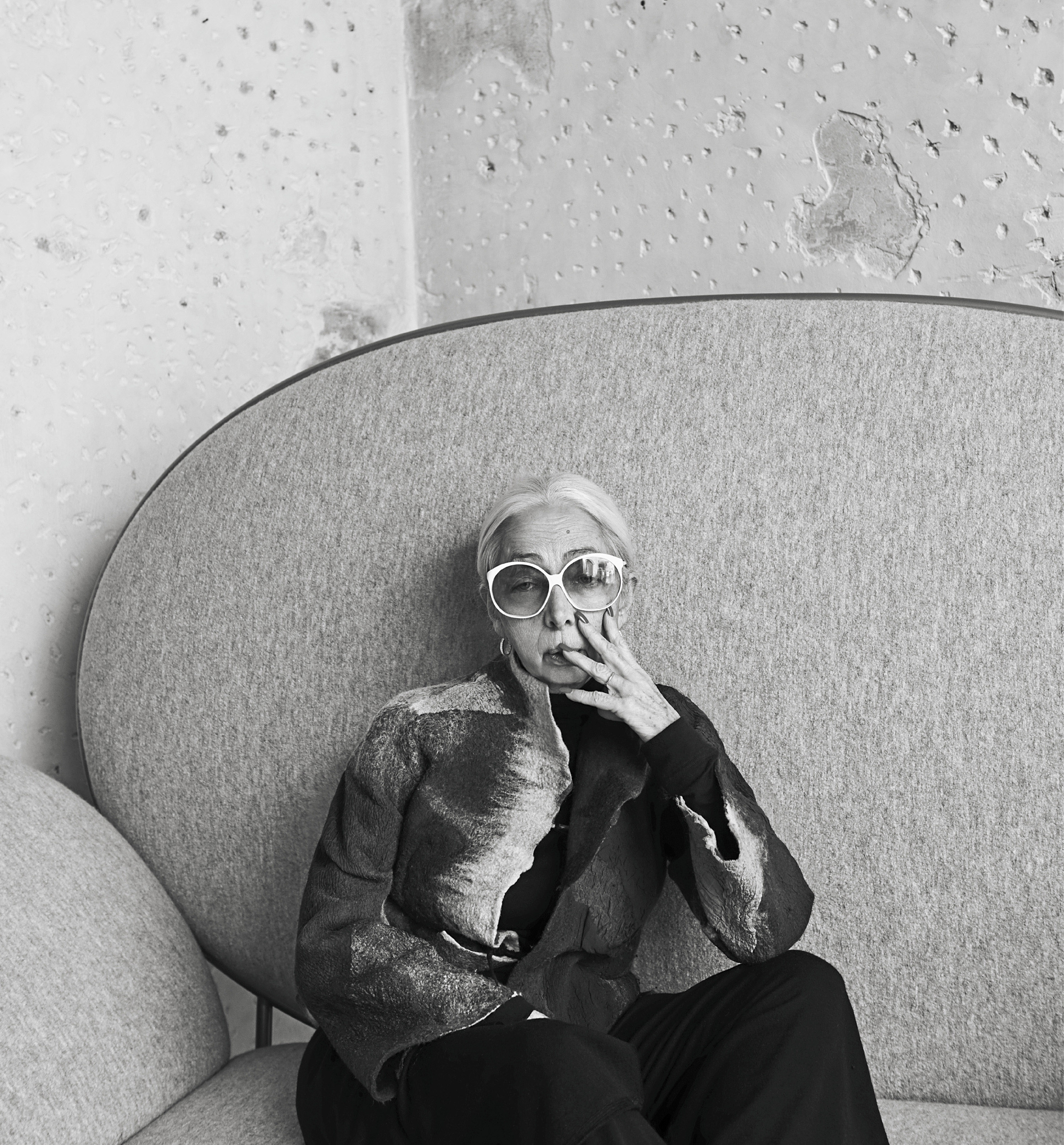
Orlandi’s oversized sunglasses are an iconic part of her look. People often stopped her on the street to ask about her eyewear, so she started producing and selling the glasses herself.
“Luxury is feeling comfortable. Not only comfortable, but cuddled.”
From Via Matteo Bandello, the only hint of Spazio Rossana Orlandi’s existence is a discreet yellow buzzer in a metallic frame. The neighborhood is quiet, mostly populated by established bourgeois Milanese families. You have to ring the buzzer and pass through three gates before reaching the sprawling buildings within. And, by the time you reach the first gate, it is clear that this venue is something altogether exceptional.
Rossana Orlandi, a petite Italian with pulled-back gray hair and red nails, is known for her keen eye. Not only does she spot great designers before anyone else, she also creates a gallery that is eternally theatrical, with great turnover: Pieces swoop in and out of her space in a breathless cycle. Thus, each visit to Spazio Rossana Orlandi is guaranteed to be different from the last.
“Every time something new arrives, Rossana feels the need to change everything around,” chuckles her right-hand man, Marco Tabasso, who has been working with Orlandi for over a decade. Before creating the gallery, Orlandi had her own knitwear collection, keeping one foot in a longtime family trade of spun yarn production. Orlandi’s sister, in fact, made a career of providing high-fashion fabrics to luxury labels. “I met Coco Chanel with her,”Orlandi reminisces. “I was very young, Coco was very old.”
Orlandi was a private collector of design items even while she was running her knitwear company. As she started to place and sell pieces over the years, the endeavor evolved into a more serious gallery enterprise. “It grew a little bit like a mushroom,” Tabasso notes wryly.
The space on Via Matteo Bandello was initially tapped to be her home. At the end of the 19th century, the whole block was a brick factory called Fornace Candiani. In the 1970s, the venue was reconverted into a factory for Prochownick, the Italian tie manufacturer. The property belonged to one family, who now only owns the garden behind the building. Orlandi gets to keep its lush view.
“It has always been a place that everybody loves. All my designer friends, when they come, get ideas and want to do something. They help me develop the space,” Orlandi says. The gallery retains many authentic details: storage boxes (from the “tie” era) line entire walls, and original wooden partitions are beautifully preserved in the showroom. Such vintage details counter the bright whimsy of the space with a proud sense of legacy.
There are no strict divisions between the showroom, store and gallery; each functions as a different kind of meeting point. There is a mix of things from around the world: from South Africa to Holland to India. “It becomes a kind of village of design,” Tabasso says. When a new piece arrives, everything else changes around it; likewise, selling a piece means reimagining everything in its environs. Orlandi is a maestro of mise en scène, creating interesting and unexpected resonances between pieces. She develops her eclecticism by reading magazines, traveling regularly—when we spoke, she’d returned from Prague the night before—and staying connected to social media for ideas. “Online, we can be citizens of the world,” she says. “Instagram is quite good, especially in a taxi.”
Amidst the dizzying display is a pool table that can also be used to serve apéritifs, made by Hillsideout in collaboration with Hermelin. Nearby is a 24-hour video installation, filmed in real time at a private residence in Manhattan, which is framed on the wall like an actual window. Made by Anotherview, it offers a meditative look out onto New York City—a contemplation on the nature of urban movement and shifting light. Down the hall, the so-called Tom Dixon room (whose walls have been painted black ever since a showcase of the designer’s work here several years ago) features pieces by Matteo Cibic for Indian manufacturer Scarlet Splendour, a carpet by Studio Job for Nodus Rug, a glass shelf designed by Germans Ermičs, and two brass mirrors by Fratelli Campana for Ghidini 1961.



Orlandi enjoys showcasing young designers. Slovenian designer Nika Zupanc, whose velvet upholstered bench is featured here, has created limited edition collections in partnership with Orlandi since 2011.
The restaurant flanking the gallery is also part of Orlandi’s universe—evident by the raw stone and brick mixed with assorted flourishes. To reduce the noises that echo off the vaulted ceiling, rotating design features are used to absorb the sound, like a knit rug by Christien Meindertsma for Thomas Eyck hung on the wall, or an armada of cloth dinner napkins dangling from the ceiling. The restaurant, which serves Italian cuisine, also caters Orlandi’s events. Orlandi’s gallery is a staple on the Salone del Mobile circuit, not only thanks to her fascinating design microcosm but equally for her reputation for ebullient entertainment. Orlandi recently finished six dinners helmed by six Michelin-starred chefs, each around the idea of spaghetti al pomodoro.
Orlandi takes a laboratory-like approach to living well. “If we speak of art, it can be absolutely uncomfortable and nonfunctional. If we speak of a chair, and it’s not comfortable, then it’s not a chair,” Orlandi says. “It depends on what it is. Lamps can be sculptural. But if a sofa is not comfortable, it’s stupid,” she says.
To relax, Orlandi prefers to spend time outside of her Milanese base. “I’m familiar with more cities abroad than Milan,” she laughs. She’s especially fond of Naples and Copenhagen, though her most memorable travel story is from Ireland, where she spotted the strangest-looking house she had ever seen. “I wanted to see who lived there,” she says. “So I rang the doorbell.” While one might assume that the owner would’ve been thrown by an accented stranger suddenly appearing on the doorstep, Orlandi’s instincts had led her to a kindred spirit. “We had a fabulous afternoon, talked over tea,” she recalls fondly of the man who answered the door and remains a friend. He told her that “happiness is up to you”—a mantra she still believes in. When it comes to more localized leisure time on the weekends, “the best, for me, is to spend it in the country with my family,” she says of her place several miles outside of Milan. The country house is a place for family gathering—she has four children, who have families of their own—and has been laid out precisely with active grandchildren in mind: “It’s a super easy house, even though it’s full of design,” Orlandi says. “Today, luxury is feeling comfortable. Not only comfortable, but cuddled.”
Alternatively, Orlandi sometimes repairs to a family castle. It has plenty of stories, although “not much in terms of design—just my bedroom,” she says. Her family was “a very classical family” with a collection of beautiful furniture. “But they’re antiques, which I don’t like,” Orlandi says. To prove the point, she let a designer transform an old family desk in heavy wood by charring it black. It’s a fitting symbol for how Orlandi operates: renewing design with a sense of boldness, never treating tradition and history too reverently.

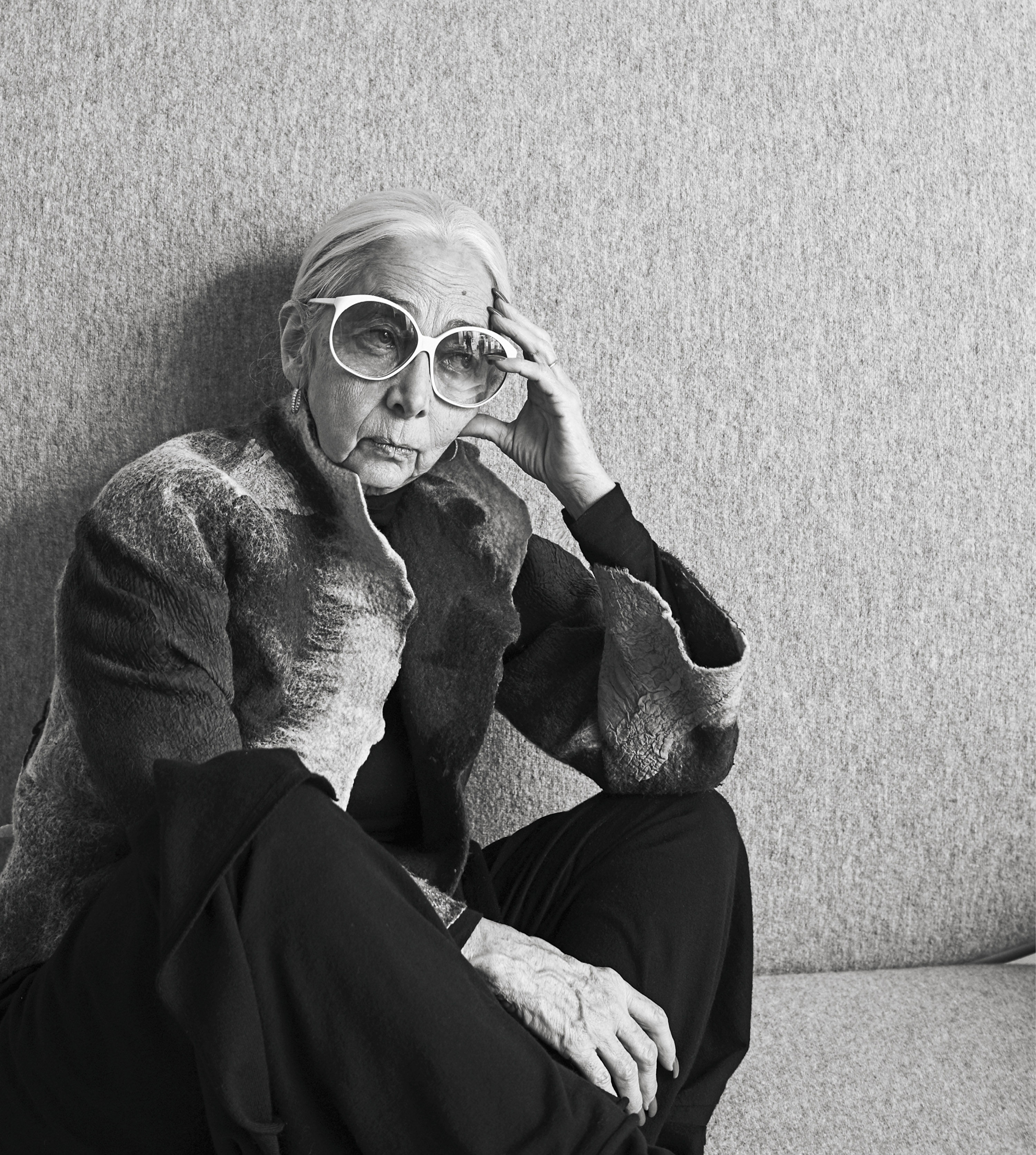
Before opening her Milanese gallery and store, Orlandi spent over 20 years consulting for labels such as Giorgio Armani and Donna Karan while running her own knitwear brand.

Her first important design piece was the Spoon Light by Sebastian Wrong, which she saw before it was put into production by Drove Design (later made by Flos and renamed Spun Light). “I have the original,” Orlandi says. “I always suggest people buy the prototypes because they are amazing.” She explains, “Often, production means compromise. If you touch the light as a prototype, it’s completely different. The proportions are different—thin, elegant.”
Orlandi is a woman who knows what she wants. “If I don’t like it, it doesn’t come to the gallery,” she pronounces. (To one designer, whose table she didn’t feel was quite there yet, she advised, “If it was a flower, I would water it.”) She doesn’t adhere to any particular aesthetic criteria: If she doesn’t like the color, she changes it, and she doesn’t shy away from kitsch. Her team, which includes her daughter, can sometimes soften or change her point of view. “I’m quite hard and straight, but I’m not absolute,” Orlandi says. “We give input, but the designers have to be free,” she says, to have their own point of view. But ultimately: “If I don’t like the result, that’s another question.”
“We’ve seen young designers become stars,” Orlandi continues. “It’s such a big pleasure to watch them grow up. We try to have exclusivity, but other people want to work with them—sometimes they’re kidnapped!” Of the fact that so many big names had their first projects with her during Salone del Mobile, however, she says, “It makes us proud.” Tabasso recalls the gallery’s early days: “When we started, people were complaining that we didn’t have so many Italians,” which was mostly due to the fact that small-batch production was not the Italian norm. Local designers “had an old idea of design, which is ‘I design, and the company takes care of everything and I earn royalties,’” he laughs. “But Italians now study abroad, and we mix a little bit.”
If the designers are changing, so are the clients. Orlandi spots trends in buying habits through shifting social strata. “What we lost is the middle class. They don’t have money like they used to,” she acknowledges. Moreover, her highest-level buyers treat the act of buying differently. “They want to know much more,” she notices. Spazio Rossana Orlandi is ultimately a niche market, not only between art and design but selling as-yet-unknown and internationally sourced brands. “We need to reassure the clients of a good investment.” Luckily, Orlandi is a reliable barometer on that matter. “We like this idea that we’re a vitrine for young designers getting into the field,” Orlandi says. This is the underpinning philosophy that powers the place year after year: studying, nourishing and boosting young creativity.


